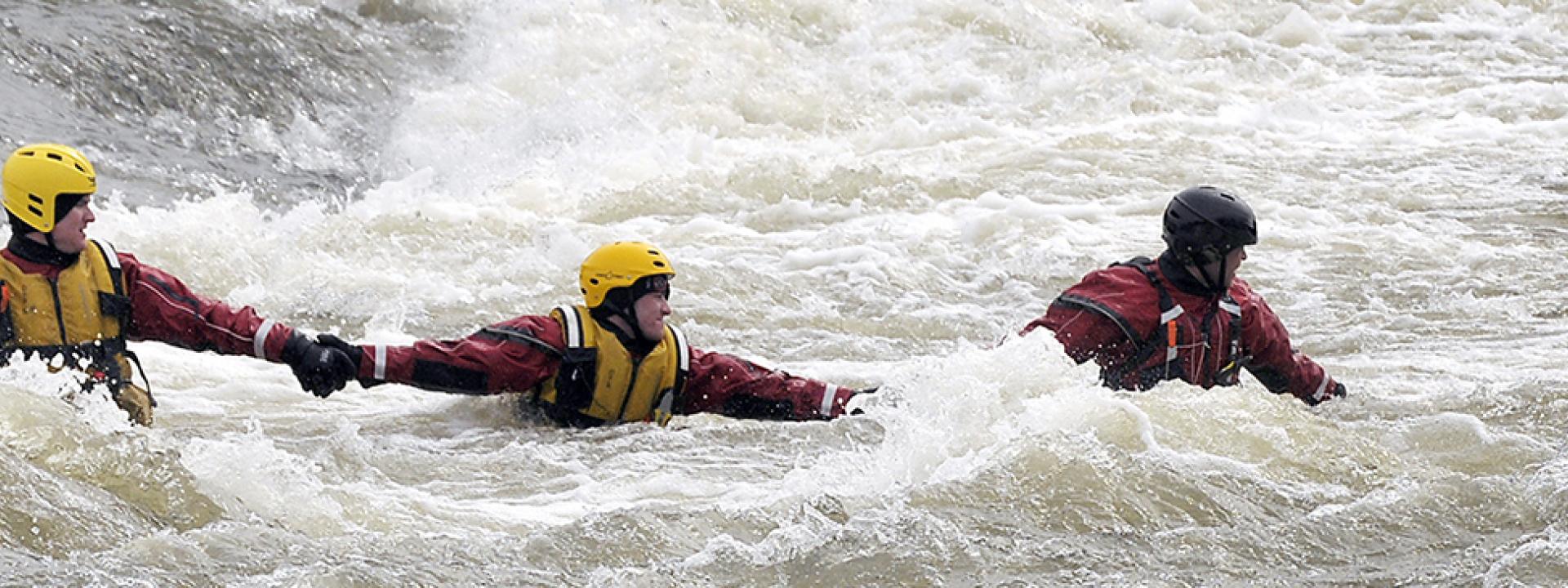Frequently Asked Questions
What are examples or types of technical rescue?
Technical rescue includes:
- Rope rescue
- Confined space rescue
- Vehicle/machinery rescue
- Structural collapse rescue
- Trench rescue
- Water rescue
What does “high risk/low frequency” mean?
There is greater risk or increased danger involved in performing technical rescue, and the need for technical rescue doesn’t occur frequently or often.
What are the requirements for the Fire Science Technical Rescue Program?
Ohio Fire Academy (OFA)
An OFA Fire Science Technical Rescue Checklist can help students keep track of the program requirements.
Where can I find a list of classes (plan of study) for the program I want to study?
The courses students need to take to complete a certificate or degree are listed in a plan of study.
Can I take classes online or face-to-face?
The fire science technical rescue associate degree program includes hands-on learning and some classes are taken face-to-face. There are some online courses that can be taken as part of the fire science technical rescue program.
What type of financial assistance is available to help me pay for college?
COTC awards more than $1 million in scholarships to students each year.
Every student is encouraged to complete a Free Application for Federal Student Aid (FAFSA) to be considered for grants, scholarships and loans.
Students who complete a FAFSA are automatically considered for some scholarships. Other scholarships require an application.
Connect with the Office of Student Financial Services at 740.366.9435 or email NWK-studentfinancialservices@mail.cotc.edu.
How do I get started at COTC?
Help us learn more about you by visiting our Future Students webpage, then follow the COTC Steps to Enroll to get started.
Purpose/Learning Outcomes
The COTC fire science technical rescue program awards an Associate of Applied Science through an excellent curriculum designed to provide education and skills in technical rescue operations for those who are seasoned professionals and for those who are new to fire science and emergency medical services professions, wishing to specialize in technical rescue operations in fire and emergency services.
Fire Science Technical Rescue Learning Outcomes
At the completion of the plan of study, students with an Associate of Applied Science in Fire Science Technical Rescue will be able to:
- Apply strategies, tactics and incident command/incident management skills to technical rescue emergency incidents.
- Application of management and leadership principles to fire department operations, interagency cooperation and implementation of policies and procedures.
- Development of skills and education for employment and advancement in fire and emergency services.
- Identify, examine and apply current and emerging concepts in technical rescue operations.
- Exhibit an understanding of basic principles of safety related to firefighter life safety initiatives and focusing on the need for cultural and behavioral change in fire and emergency services.
- Identify and demonstrate the knowledge/skills required for victim rescue and improved patient outcomes in a high-risk environment.


